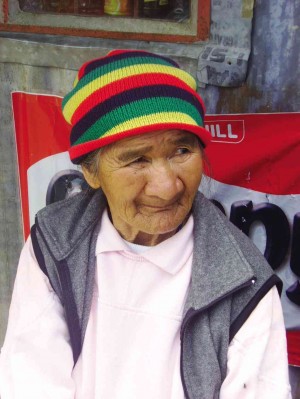
The Benguet provincial government recently condemned in a resolution the illegal earth-moving activities in Tuba town, which has allegedly resulted in the desecration of an age-old burial cave and affected the communal grounds for rites and rituals of the Ibaloi, Kankanaey and Kalanguya ethnic groups living in the area.
According to the resolution, the road project, located on a forest reserve and the ancestral domain of the three ethnic groups at Mt. Sto. Tomas, Barangay (village) Poblacion, wantonly cut or uprooted at least 293 pine and 13 alnus trees, including 415 pine and 40 alnus tree saplings. It also affected the water supply of Baguio City.
“As early as April [this year], I have already written DENR (Department of Environment and Natural Resources) about this for them to act immediately,” said Benguet Gov. Nestor Fongwan.
“If they had acted earlier during that time, siguro hindi massive ’yung nasira (maybe the destruction has not been as massive),” he added.
The DENR eventually stopped the project “but it was rather late,” said the governor, adding that the actual stoppage was issued by the mayor of Tuba in May.
Fongwan lamented the destruction, saying the project had no permit from the DENR-Cordillera Administrative Region.
Benguet Indigenous Peoples Organization representative and ex-officio member of the board Blas Dalus also condemned the road project supposedly initiated by a lawmaker from Baguio City.
“We are strongly condemning the illegal act because it is a destruction of the ancestral domain. It is a destruction of our customary laws and practices,” he said.
Not true
Residents of Mt. Sto. Tomas, specifically of Sitio Kabuyao, where the controversial project is located, denied reports that the burial cave was desecrated by the earth-moving activities.
It was earlier reported that an entire cave was swamped by the soil coming from the project.
“The burial cave is not affected by the project because its location is far. There’s a creek between them,” said resident Betty Patalec.
Josephine Pumahing, a village watchman, said that the cave was not swamped by the soil coming from the road opening.
Occular inspections done by barangay officials on June 13 and 21 on the two burial caves in the area disproved the claim of desecration.
“While it is true that one of the road openings is directed toward the site where one of the burial caves is located, we found no soil residues within the vicinity of the burial cave. Same is true with the other burial cave located below the claim of [lawyer] Nicasio Aliping,” said the barangay report submitted to the provincial government.
This was verified by the Inquirer on a recent check of the site through the assistance of residents and barangay sentries Pumahing, Robert Catalino, Rowena Catalino, Ronnie Willy and Fili Lagman; with Willy serving as guide inside one burial cave known locally as Mummy Cave, located below the radar station.
Desecration
Tourists and not the road project are desecrating the cave, particularly Mummy Cave, based on the recent check.
The inspection showed that the cave had been disturbed, with human bones scattered around. Some even had traces of having been burned.
A wooden coffin may have been burned, said Willy. Traces of ash were found inside the cave.
The local government has plans to develop the site into a tourist spot to protect it from vandals, said Rowena Catalino.
Casino explained that the plan said tourists might have vandalized the caves and even taken the bones and remains with them as souvenirs.
“Plano nila protektahan ang cave para gumanda ulit (They plan to protect the cave for it to be improved again),” she added.